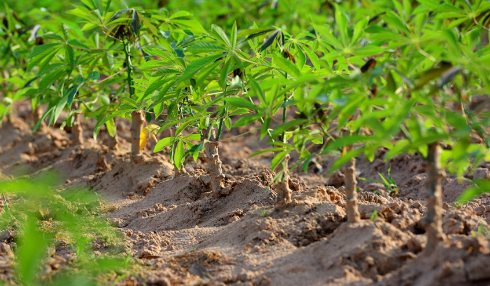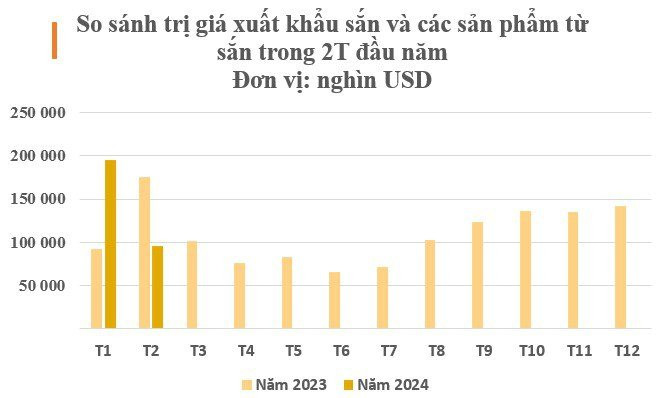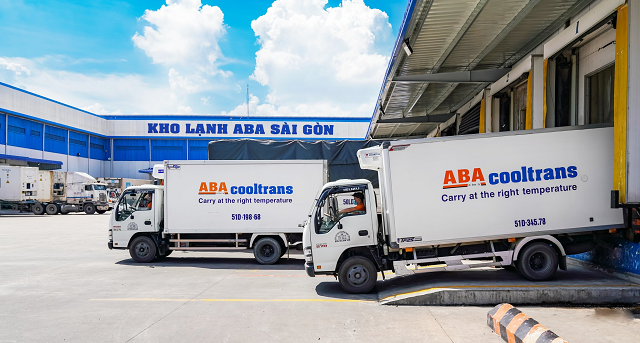
Illustrative image
Vietnam owns a type of tree known as the billion-dollar tree due to its highly lucrative economic value, which is cassava. According to statistics from the Ministry of Agriculture and Rural Development (MARD), Vietnam has about 530,000 hectares of cassava cultivation every year with a fresh cassava yield of over 10 million tons per year. It is worth noting that cassava tubers and leaves are both exportable items even reaching billions of US dollars, while the stem and shoots of the cassava plant have many other valuable uses.
According to preliminary statistics from the General Department of Vietnam Customs, cassava exports and cassava-based products in February earned over 96 million USD with 217,037 tons, a decrease of 48.7% in quantity and a decrease of 50.8% in value compared to January. In the first two months of this year, the export volume of all types of cassava reached 639,061 tons, down 9.1% compared to the same period last year, while the value increased sharply to 8.9%, reaching over 291 million USD.

The highlight of cassava exports in the first two months of this year is the sharp increase in prices compared to the same period last year, averaging 456 USD/ton, an increase of 20% compared to the 2nd quarter of 2023. Meanwhile, the average export price of cassava in 2023 was only 282 USD/ton.
A country that has always been a loyal customer of cassava and cassava-based products is none other than our neighbor China. By the end of February, China imported 599,930 tons of cassava from Vietnam with a value of over 269 million USD, accounting for 93% of both quantity and revenue.
In 2023, Vietnam’s cassava and cassava-based products export volume reached 2.95 million tons, valued at 1.3 billion USD, down 9.1% in quantity and 7.3% in value compared to 2022. In particular, the cassava sector brought in more than 231 million USD with 821.51 thousand tons, up 8% in quantity and 4.9% in value compared to 2022. In 2023, China remained the largest consumer market for cassava and cassava-based products from Vietnam, accounting for 91.52% in terms of quantity and 90.99% in terms of value in the country’s total exports, reaching 2.7 million tons, valued at 1.18 billion USD.
Vietnam mainly exports cassava starch and dried cassava strips to China. The export volume of dried cassava strips to China accounts for about 88% of the total export volume of dried cassava strips in the country, while the export volume of cassava starch to China accounts for about 93% of the total export volume of cassava starch.
Cassava has many uses in industrial processing, animal feed, and food. Cassava tubers are used for fresh food, animal feed, processing dried cassava strips, cassava starch powder, modified cassava starch, cassava starch-based products. Cassava stems are used for breeding, mushrooms, firewood, raw materials for cellulose industry.
From ancient times until now, cassava leaves have been used as animal feed in fish and silk farming and later exported to markets such as South Korea, Japan, and densely populated areas of Asia. Besides cassava leaves, other types of leaves such as bamboo leaves and banana leaves are also purchased by many countries.
The Vietnam Cassava Association has set a target to export cassava to reach 2 billion USD per year by 2028 and increase to 2.5 billion USD per year by 2050.





































